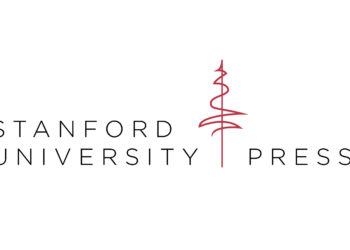As has been noted previously in The Scholarly Kitchen, few people set out to have a career in academic publishing – we often end up here when walking away from other paths. Many arrive from traditional business backgrounds in other parts of the communications or publishing industries, while another large segment is comprised of former academics. The latter often arrive once they reach the end of their PhD student/postdoc funding and find that a faculty job is unavailable or undesirable (or both).

The divergent backgrounds found in scholarly publishing make it a vibrant and diverse community, but the large population of former academics imbues our community with another, overlooked attribute: neurodiversity. Because people in STEM-related occupations score considerably higher on the Autism-Spectrum Quotient (AQ) than members of the general population (see here), we are likely to have a lot of neurodiversity in scholarly publishing.
Neurodiversity encompasses a wide range of traits and behaviors, but in general people on the autism spectrum are good at non-verbal reasoning, reading, perceptual motor skills (e.g., working out the right lid for a Starbucks coffee cup), drawing, computer-related skills, and music. They may also have exceptional memory skills and visual-spatial abilities (e.g., navigating or estimating distances). On the downside, people on the spectrum may have trouble with developing social relationships, difficulty communicating, an excessive dependence on routine, or abnormal sensitivities to sensory stimuli. There’s a fascinating Twitter thread about traits associated with autism here.
People with severe autism don’t generally enter the workforce, but those with mild autism can go on to have successful and productive careers. They may even go on to revolutionize their field, as some combinations of autistic traits can lead to an extraordinary capacity for innovation and the single-mindedness to make their vision a reality.
The drive to embrace other aspects of diversity in scholarly publishing and elsewhere focuses on equity and inclusion, which is the idea that everyone is given the tools and opportunities they need to achieve their potential. For neurodiversity, the difference between equality (everyone is given the same opportunities) and equity (everyone is given what they need to succeed) is particularly stark.
For example, an golden opportunity to work in Sales could be unwelcome for some neurodiverse employees: navigating complex social dynamics with potential customers in a noisy room might prove very stressful; a neurotypical person might find the same situation normal or even enjoyable. An opportunity to derive actionable insights from reams of complex data might be bewildering and frustrating for a neurotypical person, but deeply satisfying for someone on the autism spectrum. The key is to help neurodiverse employees find their niche, one where their weaknesses are not a constant source of discomfort, and one where their sometimes-surprising strengths are used to benefit both the individual and the organization.
April is World Autism Month, and thus a good opportunity for each of us to appreciate the differences in how our friends and colleagues perceive and interact with the world. Helping them and their organizations make best use of neurodiversity may be the difference between frustration and a rewarding career.
Discussion
12 Thoughts on "A Hidden Diversity in Scholarly Publishing"
Thanks so much for this post, Tim. Neurodiversity, like all forms of diversity, improves our work and communities. Different approaches and perspectives are invaluable!
It’s also helpful to be clear about the challenges and disabilities of neurodiverse folks. Creating space for accommodations and support is productive for all. *And* lots of accommodations turn out to the best practices for the entire team.
Grateful to my colleagues in Neurodiversity at William & Mary, especially Neurodiversity Scholar in Residence John Elder Robison, and to our students in the Neurodiversity Student Group: https://www.wm.edu/sites/neurodiversity/
It’s great to hear that there’s a Neurodiversity Scholar at William & Mary. What’s their main role?
We team teach a course for students on campus (Neurod. 101, basically) that includes psychologists, neuroscientists, humanists (that’s me!), often with a legal scholar, and others. We also teach it as a weekend course in DC each summer. John Robison brings his wealth of knowledge of science policy as well as self-advocacy to that. He also guest lectures in many classes a year, is a core member of the policy and programs team for Neurodiversity, and meets with our Neurod. student group regularly– and acts as an informal advisor and mentor. And more!
Really enjoyed this one, especially that Twitter thread! Thank you.
Thank you for this post and spreading awareness!
Thank you for this post, Tim. Some helpful food for thought.
This is definitely something interesting to think about and I think I agree with your general premise, but please do note that individual people cannot be “diverse”; only a group of people can be diverse. So you shouldn’t talk about “neurodiverse employees.” See, e.g., https://www.theatlantic.com/entertainment/archive/2016/01/ava-duvernay-oscars-so-white-diversity-academy-awards-language/429225/.
I agree with your general point, but ‘neurodiverse employees’ are, in fact, a group of people, and they can therefore be diverse. As I note in the post, neurodiversity encompasses a wide range of traits and behaviours: these people are both different from neurotypical people and different from each other.
Yes, but “neurotypicality” and “neurodiversity” are in common use to indicate individuals whose neurology is typical or atypical (according to our current understanding of brain differences). As neurodiverse and neruordiversity are terms used by self-advocates, I’m very happy to embrace them!
This is the “language is as language does” argument. I heartily endorse this. Top-down prescriptivism in communications runs into the sheer complexity of this crazy thing of being human.
Karin,
Can you show some uses of “neurodiverse” (adj.) used to describe individual people (not used to describe the heterogeneity of a group)? I’m not aware of this being widespread, but maybe it’s just me. My experience has been that “neurodivergent” or “neuroatypical” (although perhaps that’s being used less lately) are used, following the usage described here (sorry, but I don’t know how to format block quotes):
“Neurodiversity is not a trait that any individual possesses. Diversity is a trait possessed by a group, not an individual. When an individual diverges from the dominant societal standards of “normal” neurocognitive functioning, they don’t “have neurodiversity,” they’re neurodivergent (see below).” (http://neurocosmopolitanism.com/neurodiversity-some-basic-terms-definitions/)
The simplest answer, coming from an autistic person, is “We are what we say we are.” If a person of color were to say they were black, Nigerian, African-American, Mexican, Latina . . . you would honor their chosen term, right?
If so, when a person who is neurologically different says, I have autism, or I am neurodivergent, or I am neurodiverse . . . it’s their right to choose. The respectful response is to follow that lead, if there is one.
If you are writing about the members of one of these communities you are faced with choosing the language you feel is most likely to be acceptable. While some would say Neurodiversity is the overall concept and neurodivergent are the people with different neurology, others would say neurotypicals have the typical neurology and neurodiverse people are all the rest (those who are different).
In other words, there is more than one way to read a “correct” meaning here, and the blog post you reference is far from the last word on the topic.
I’ve written a bit on this topic, and I have an essay on this very thing in the newest issue of the journal Autism Research. And for those who don’t know, I am autistic, neurodivergent, or neurodiverse. I am some of those things, or all of those things, depending on your perspective.



